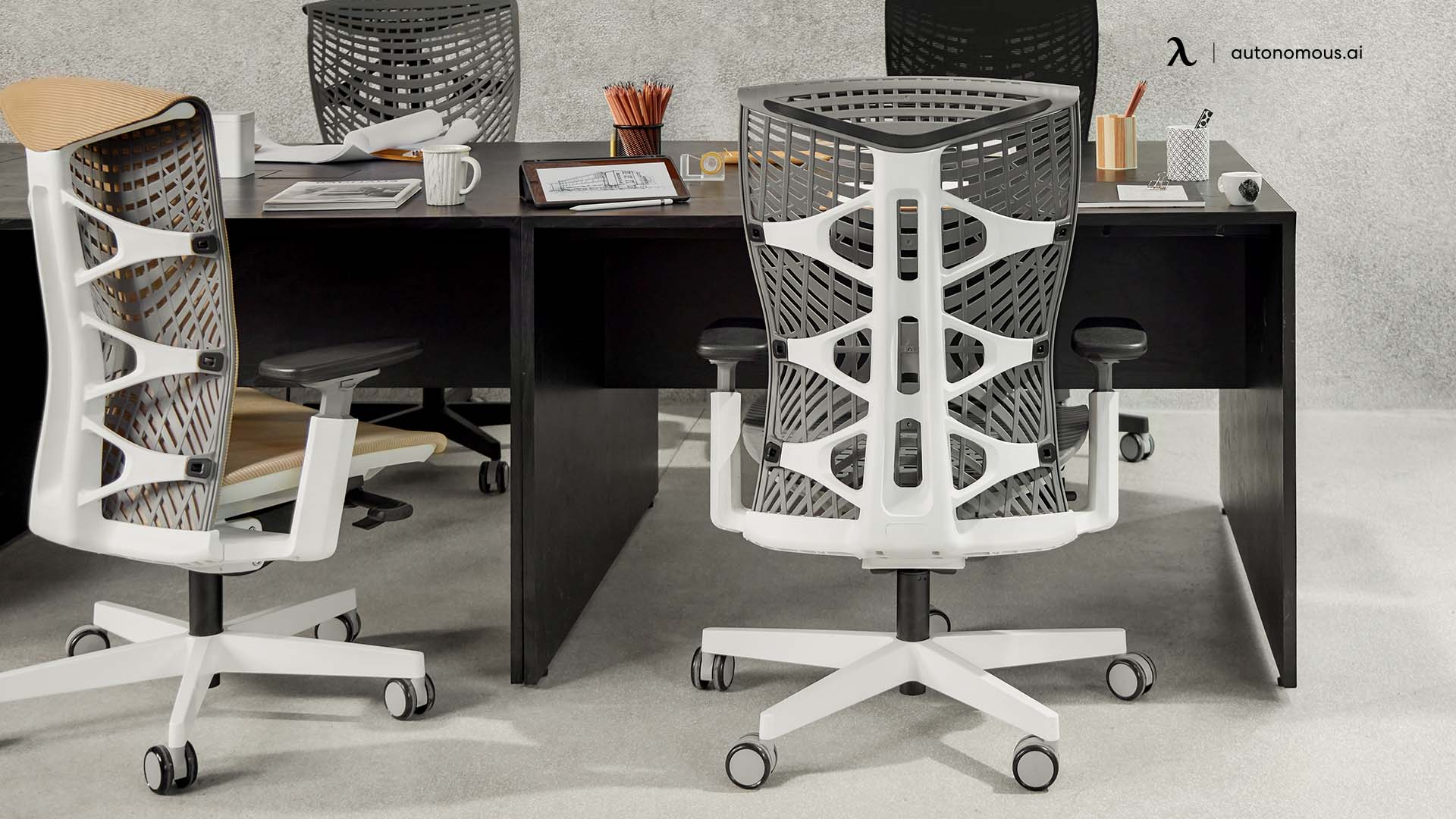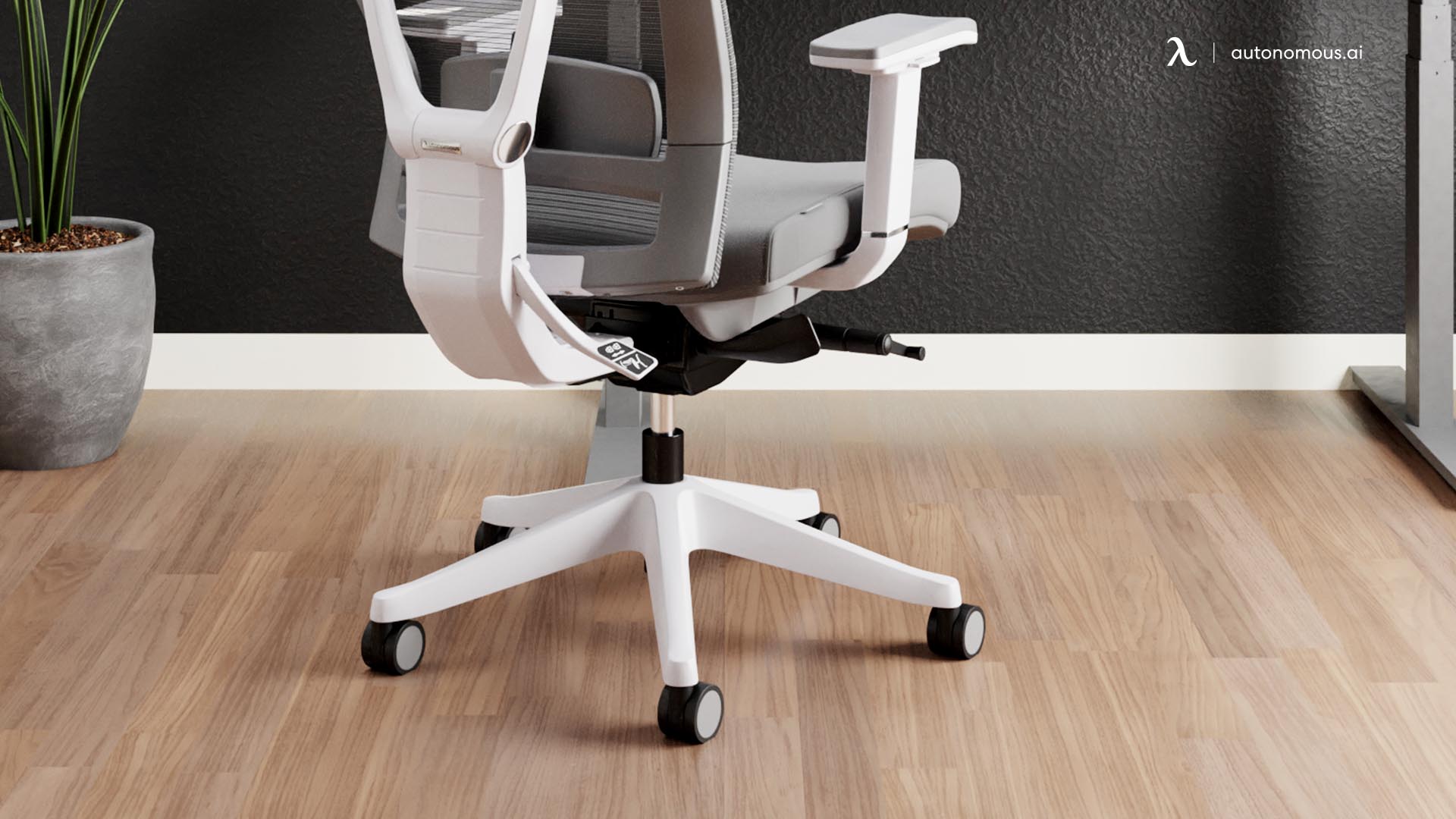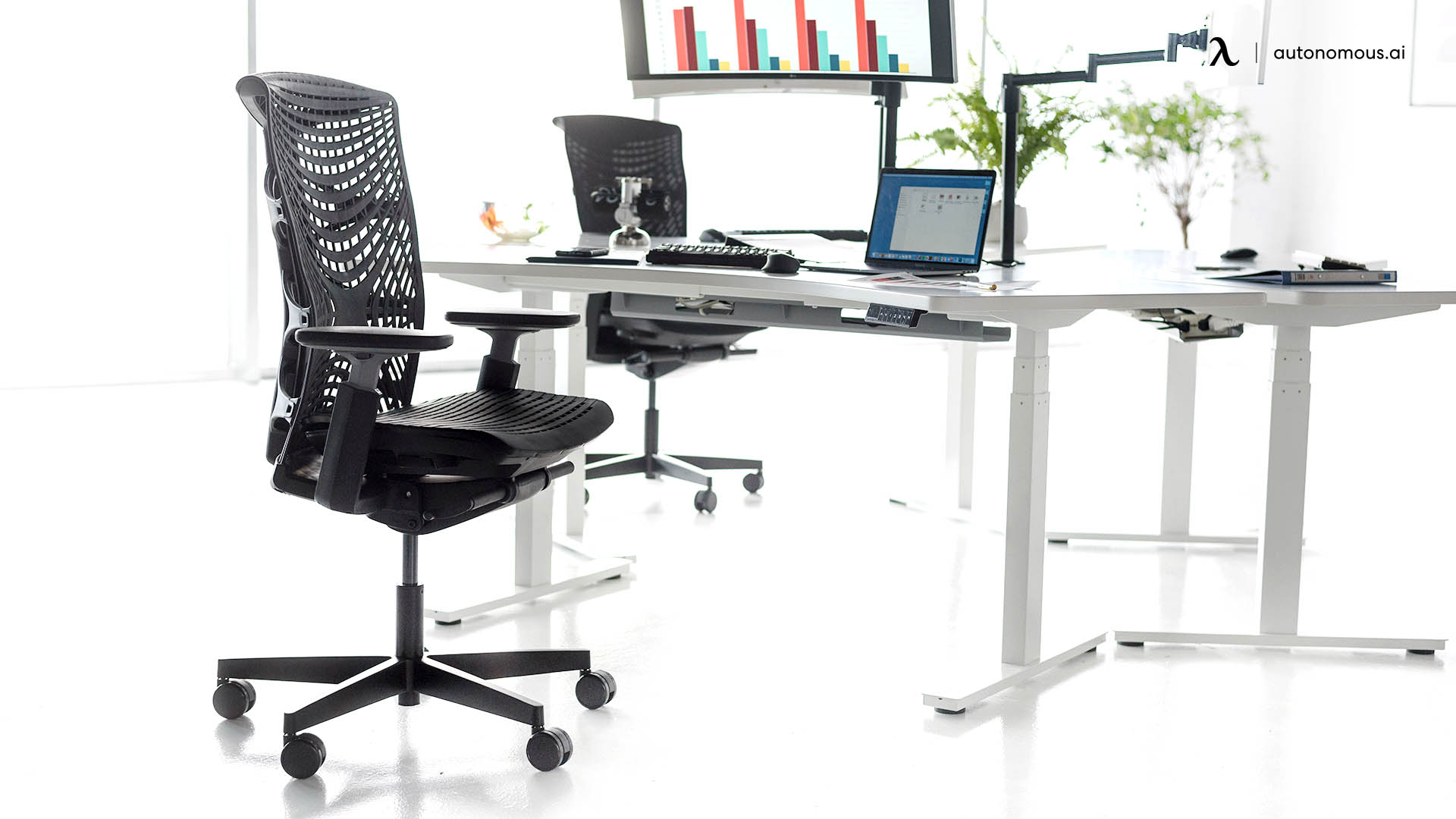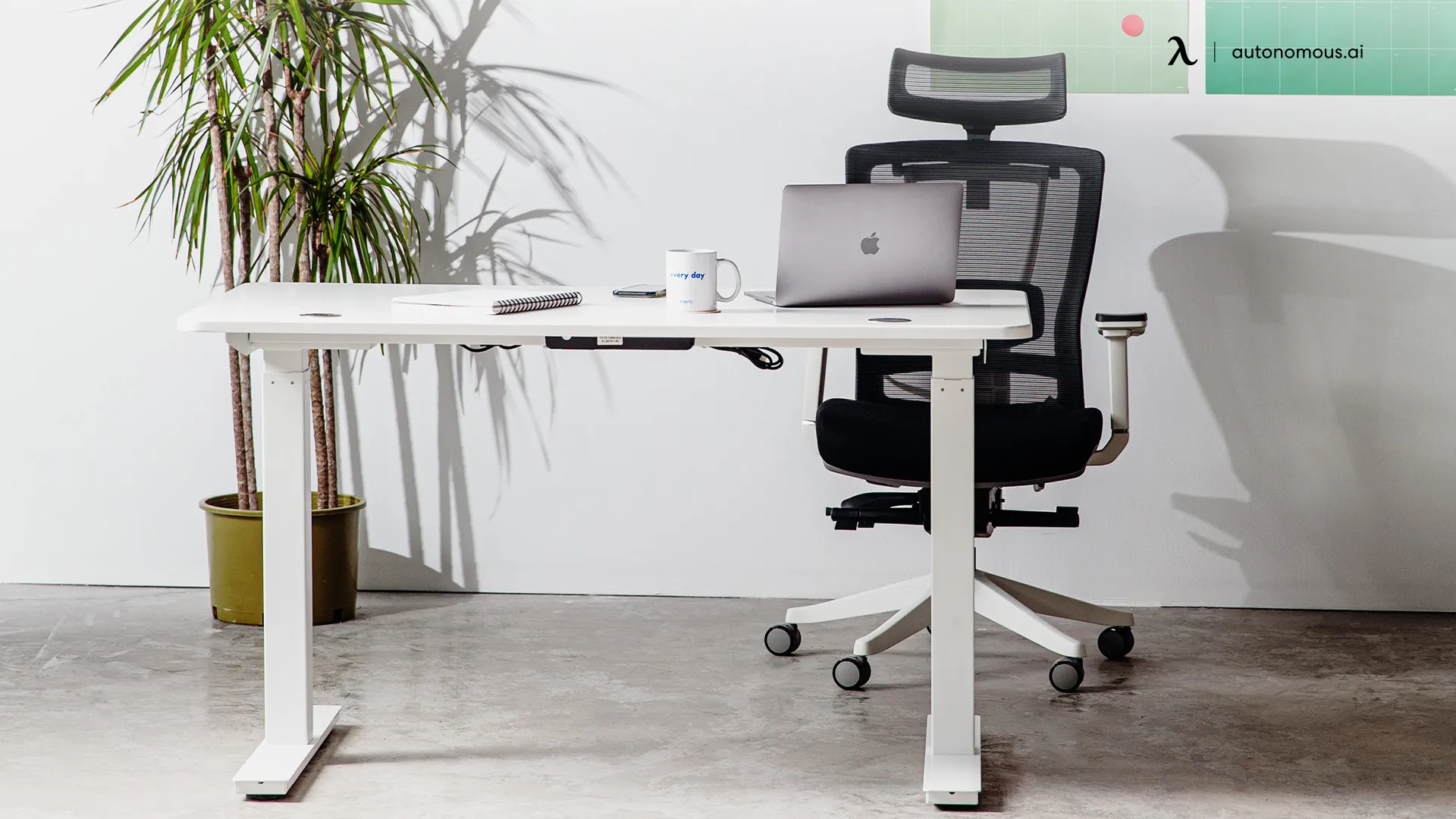
A Guide to Choosing an Office Chair Mat for Your Floor Type
Chair mats are an essential part of office work and home chair use. If you have a chair that rolls or moves at all, you need a chair mat. However, there are a ton of products available online to serve the purpose, so how do you decide which one to get? We’ve compiled a complete list of factors to consider.
Floor Type
The first and most obvious consideration is the kind of flooring you have. Different kinds of flooring will necessitate different kinds of chair mats.
Flooring can be divided into two categories: carpet and hard surfaces. The carpet generally needs a thicker chair mat, often with nubs or spikes on the bottom to hold it in place. This prevents the mat from moving around as you roll your chair across it. The thicker material helps prevent the weight of the chair from bending the mat too much and cracking it.
1. Carpet comes in three general varieties, divided by how soft and deep they are. Low-pile carpets are the kind of carpets you see in offices around the world. They’re hard, firm, and short, made easy to clean and walk on without drag. These need relatively flat chair mats and can be considered to be similar to hard surface flooring.
2. Medium-pile carpets are slightly longer and can sometimes be found in offices, though they’re usually more common in homes. These need chair mats with slightly thicker material and nubs to keep them in place.
3. High-pile carpets are common in homes but are rarely or never seen in offices, because they’re very deep and hard to clean without serious investment, and they can get worn down over time by frequent traffic. Think shag carpeting. These need very thick chair mats with spikes to keep them in place, or a chair mat that floats above the surface.

4. Hard surface floors need a flat chair mat. Nubs or spikes would make the chair mat lifted and uneven, and unpleasant to walk or sit on. A flat chair mat exists to protect the floor from the chair as much as possible.
5. Hard surfaces such as laminate and hardwood need this protection. They can be refinished if a chair damages them too much, but it’s a lot of work and expense to do so. Be careful to make sure you clean underneath the chair mat regularly, and/or seal it in place, otherwise, grit can work its way under the mat and the small movements of rolling around on it can rub against the surface, damaging the floor.
6. Linoleum floors can use a chair mat, or you can use a chair directly on them. Few people even like linoleum these days, so damaging it is a good excuse to pull it out and replace it with better flooring (or reveal the perfectly good hardwood beneath it, in the case of home construction).
7. Tile flooring may or may not need a chair mat, depending on how rough it is. If it’s relatively flat, as the tile in many government buildings, you don’t need a chair mat; the tiles are resilient enough on their own and don’t need protecting. If it’s more like bathroom tile, with grout gaps, a chair mat can help prevent the chair from breaking a tile or running in the grout.
8. Concrete floors are generally extremely resilient and are more likely to grind away at the casters on the chair than they are to be damaged by it. A chair mat can be used for aesthetics or ergonomic purposes but is not necessary to protect the floor.
Now that we've covered the different types of flooring, what about the material of the chair mat itself?

Mat Material
Chair mats generally come in four or so different materials. The choice of material is partially dependent upon your sense of aesthetics, and partially on the texture and durability of the material.
1. PVC chair mats are the most common and the cheapest. These are the clouded plastic chair mats found in many offices around the world. They’re soft, slightly textured, durable, and cheap, making them ideal for most office environments. However, they can grow brittle and break over time, and they’re also often difficult to clean, and they look exactly as cheap as they are.
2. Polycarbonate chair mats are a more durable, more aesthetically pleasant kind of chair mat. They tend to be more durable to stand up to long hours of usage and work well for both carpet and hard surfaces.
3. Tempered glass chair mats are extremely tough and durable, and tend to look great. They’re much more expensive, though, and harder to use in offices with non-standard configurations. You can’t cut them to size like you can with the plastic-styled chair mats.
4. Wooden chair mats are essentially raised, slightly cushioned platforms a chair can rest on. They’re gorgeous for office use and can make for a smooth and comfortable surface on an otherwise carpeted office, but they’re also very expensive and not very durable. They’re exactly as prone to damage as hardwood itself and can look scratched up as they age, which might not be aesthetically pleasing. These are more for novelty and low-usage chair mats, not every-day chair mats.
Mat Shape
The shape of your chair mat is determined by the configuration of your office furniture. The two most common shapes are a rectangle and a fattened T shape with a nub that fits under the desk but allows for plenty of space for the chair. Other mats can be a wide range of shapes and can even be cut into a customized shape - if you get an over-large mat and want to trim it down.
The shape of the mat doesn’t affect how the mat performs; it’s solely for usage purposes. Therefore, we can’t recommend a specific shape. In order to decide on a shape, think about the shape and size of the space you have to work with. Where is your chair going to be rolling? You want to make sure there’s a chair mat underneath anywhere the chair will roll during use. You can buy an extremely large square mat and position it under your desk as well - if you like.
Mat Appearance
The vast majority of chair mats are either clear or frosted. The frosted appearance is best for minimizing how visible minor scratches, blemishes, and dirt are. Tempered glass chair mats are the same, either clear or frosted glass. Wooden chair mats can be a variety of wood grain patterns and colors and can be purchased to match your furniture with ease.
Appearance is largely aesthetic. Pick a mat you like that matches your office, and don’t worry too much about how it looks.
Additional Chair Mat Features
Picking the right chair mat doesn’t necessarily just mean looking at the shape and the cleats on the mat. You may also want additional features.
One such feature is an anti-fatigue mat built into the chair mat. These mats are meant to be more mobile; the anti-fatigue part is pushed under the desk when you’re using the chair, but when you stand up to work at a standing desk, you pull it out and use the anti-fatigue portion of the mat.
These can be very pleasant to use but have the drawback of being a single large piece. It can be awkward to use, and if you don’t like the anti-fatigue portion of the mat, you’ll need to get a different stand-alone anti-fatigue mat instead.
Another optional feature is additional patterns. There are chair mats available with novelty patterns worked into their material, to make them look more like a rug or floor covering rather than a simple PVC chair mat. These tend to be very beautiful to use, but are more expensive to buy.
An alternative to a chair mat is a firm, low-pile rug. A firm rug can operate as a chair mat for either high-pile carpets or hard surfaces like concrete, though it will make it harder to roll the chair around than using a simple chair mat.
Static build-up is another issue with office situations, particularly in colder and dry months. Static electricity can be unpleasant when you have to interact with anything that can suddenly ground you, and it can even be dangerous to small electronics and computers. Many chair mats, though not all of them, generate static electricity because of their materials. You may want to look into an anti-static chair mat that has the ability to keep itself grounded rather than passing the shock along to you.
A final consideration you might have is the eco-friendliness of the chair mat. Basic PVC and plastic chair mats are pretty bad for the environment, both in terms of manufacturing and later disposal. Some can be recycled, but not all of them. Eco-friendly chair mats do exist, but these can vary by vendor, so you’ll need to talk to the vendor specifically to determine if their mat is environmentally safe.

Securing a Chair Mat
Chair mats can move with you when you roll your chair around, to a large or smaller degree. Depending on how you’re using the chair mat, you may want to secure it to the floor. You can do this in several ways.
The first is to use a chair mat with cleats or nubs to hold it in place. This works with medium and high pile carpets, but not for low pile carpets or hard surfaces. The chair mat can still move, but that motion doesn’t damage the floor and doesn’t make it harder to move the chair, so you’re still coming out on top.
For harder surfaces, a chair mat with a textured surface can give it enough friction to keep from moving too much. However, it can still move a tiny amount back and forth, which can damage a floor over time, especially on hardwood or laminate flooring.
You can use double-sided tape to secure a chair mat in place. This has the advantage of securing the mat, but the tape can leave residue on the floor and can pull up stain or patterns from linoleum flooring. It can also make it harder to replace your chair mat later. You can also tape the mat down around the edges, which can help keep it in place and prevent grit from getting under it, but that’s not likely to stay for very long.

Final Recommendations
Nine times out of ten, a simple PVC or polycarbonate chair mat will be fine for your needs. Pick cleats if you have a high-pile carpet, or a flat/textured chair mat if you have a low-pile or hard surface floor.
If you have a stronger desire for aesthetics rather than pure functionality, you might consider a tempered glass chair mat. These are much more beautiful and durable, but they need to be sized perfectly for your space because you cannot cut them down to size.
We don’t recommend wooden chair mats; while they can look pretty, they wear out quickly, and they tend to be correspondingly more expensive. If you’re going for aesthetics, a chair mat with a color or a pattern built into it is generally going to be the better option if you don’t want something with the simple elegance of glass.
In general, you will want to get a mat that is larger than the space you have available and secure it to the floor if at all possible. Otherwise, you run the risk of dirt and grit getting beneath the chair mat, and the subtle motions of the mat moving when you roll around rubbing that grit into the floor and damaging it anyway. Remember that you can trim down a PVC mat to size, but a glass or wooden mat can’t be adjusted.
Finally, make sure to clean your chair mat regularly. You want your mat to look good as part of your office, so letting it accumulate dirt and scratches isn’t a good idea.
What kind of chair mat do you think is best? Leave us your ideas in the comments below!
Spread the word
.svg)







